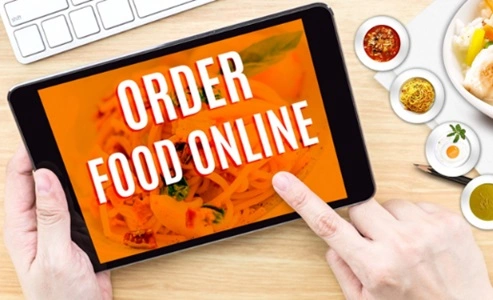As of January 17, 2025, the online food ordering system has become an integral component of the global food service industry, reflecting significant growth and transformation. A comprehensive SWOT analysis—assessing Strengths, Weaknesses, Opportunities, and Threats—provides valuable insights into the current state and future prospects of this dynamic sector.
Strengths
1. Market Expansion and Revenue Growth: The online food delivery market has experienced substantial growth, with revenues projected to reach $1.41 trillion in 2025. This upward trajectory is expected to continue, with an anticipated compound annual growth rate (CAGR) of 7.88% from 2025 to 2029, leading to a market volume of $1.91 trillion by 2029.
2. Consumer Convenience and Accessibility: Online food ordering platforms offer unparalleled convenience, allowing consumers to browse menus, place orders, and make payments seamlessly through mobile applications and websites. This ease of use has significantly enhanced user experience and satisfaction.
3. Technological Advancements: The integration of advanced technologies, such as user-friendly interfaces, real-time order tracking, and personalized recommendations, has improved operational efficiency and customer engagement. These innovations have streamlined the ordering process and fostered customer loyalty.

Weaknesses
1. High Operational Costs: Despite increasing revenues, online food delivery services often grapple with high operational costs, including logistics, delivery personnel compensation, and technological infrastructure maintenance. These expenses can erode profit margins and pose financial challenges.
2. Dependence on Third-Party Platforms: Many restaurants rely heavily on third-party delivery services, which can lead to reduced control over the customer experience and dependency on external platforms for order fulfillment. This reliance may also result in higher commission fees, impacting overall profitability.
3. Quality and Consistency Issues: Maintaining food quality during delivery remains a challenge. Factors such as delivery time, packaging, and handling can affect the freshness and presentation of the food, potentially leading to customer dissatisfaction.
Opportunities
1. Diversification of Services: Expanding service offerings to include grocery delivery, meal kits, and virtual kitchen collaborations can attract a broader customer base and create additional revenue streams. The grocery delivery market, for instance, is projected to reach $945 billion by the end of 2025.
2. Adoption of Sustainable Practices: Implementing eco-friendly packaging and promoting sustainable delivery methods can appeal to environmentally conscious consumers, enhancing brand reputation and customer loyalty. Sustainability has become a significant factor influencing consumer choices in the food delivery sector.
3. Integration of Advanced Delivery Technologies: Exploring innovative delivery methods, such as drone and robotic deliveries, can improve efficiency and reduce operational costs. Companies like Zomato have tested drone deliveries, indicating a trend towards adopting such technologies in the industry.
Threats
1. Intensifying Competition: The online food delivery market is highly competitive, with numerous players vying for market share. This competition can lead to price wars, reduced profit margins, and increased pressure to continually innovate and differentiate services.
2. Regulatory Challenges: The emergence of unregulated “ghost kitchens” has prompted increased scrutiny from food safety authorities. For example, in New South Wales, Australia, authorities have intensified efforts to identify and shut down illegal ghost kitchens operating without proper regulation, highlighting the need for compliance with health and safety standards.
3. Economic Uncertainties: Economic downturns and rising operational costs can adversely affect both service providers and consumers. For instance, the restaurant sector in Australia has faced high insolvency rates due to increasing operational costs and reduced consumer spending, underscoring the vulnerability of the industry to economic fluctuations.
Conclusion
The online food ordering system in 2025 stands at a pivotal juncture, characterized by significant growth and transformative potential. Leveraging strengths such as market expansion, consumer convenience, and technological advancements, while addressing weaknesses like high operational costs and quality control issues, is essential. Capitalizing on opportunities through service diversification, sustainable practices, and advanced delivery technologies can further enhance market position. However, navigating threats posed by intensifying competition, regulatory challenges, and economic uncertainties requires strategic foresight and adaptability. By embracing innovation and maintaining a customer-centric approach, the online food ordering industry can continue to thrive in the evolving global landscape.














